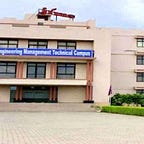Educational robots facilitate the acquisition and enhancement of programming and robotics expertise among students of various age groups, concurrently fostering the development of other cognitive abilities. Discover how robots can enhance the education of your kids and identify the most popular options from the extensive selection of robots now available in the market.
Karel Capek, a Czech playwright, coined the term “robot” to refer to the automata in the science fiction play R.U.R. (i.e. Rossum’s Universal Robots), that debuted in Prague in 1921. The term “robot” was coined by Capek, derived from the Czech word “robota” which means strenuous labour.
Nearly a century later, automata have integrated into the educational and cognitive growth of our children. We are discussing educational robots.
Educational Robotics helps students
Educational robotics, also known as pedagogical robotics, is a field that aims to engage children in interactive learning of robotics and programming from a young age.
For baby and primary school, educational robotics equips children with the necessary tools to effortlessly construct and programme a robot that can execute a range of activities. Additionally, there are more sophisticated and costly robots available for use in higher education as well as secondary school. Regardless, the intricacy of the subject is consistently tailored to the pupils’ age.
Educational robotics is a component of STEM (Science, Technology, Engineering, and Mathematics) education, which is a teaching approach that integrates science, mathematics, and technology. This paradigm prioritises practical application above theoretical learning.
Educational robots facilitate the early development of computational thinking, a fundamental cognitive capacity related to mathematical reasoning, by engaging youngsters in play activities. In other words, they facilitate the cognitive process we employ to resolve problems of diverse nature using a systematic series of acts.
In addition to fostering computational thinking, robots for education facilitate the cultivation of several cognitive abilities in children and adolescents:
· Gaining knowledge from errors: realising that mistakes are not permanent but rather a means of deriving fresh insights is a great lesson towards the future.
· Teamwork fosters socialisation and collaboration by promoting a group-oriented approach to challenges.
· Adaptation: Given the escalating proliferation of automation & intelligent gadgets, acquiring familiarity with robot utilisation will facilitate children’s adjustment to the future world more effortlessly.
· Creativity is fostered by the exploration of solutions and the liberty to assign novel functions to these robots, so stimulating imagination and ingenuity.
· Self-esteem: Attaining success in a novel domain enhances pupils’ self-awareness.
· The presence of a proactive spirit not only enhances their self-confidence but also motivates them to undertake new endeavours in other domains.
· Self-assessment: Students develop the ability to evaluate their performance by directly observing the outcomes of their actions, without relying on adult feedback to determine their success or failure.
· Practical applications of mathematical as well as physical knowledge acquired in school serve as a source of motivation for children and young individuals to persist in studying these disciplines.
· Additional cognitive abilities that are positively impacted by educational robots include accountability, organisation, enhanced spatial awareness and object interactions.
An additional significant advantage of educational robotics is their ability to familiarise and instruct youngsters in fundamental programming ideas, a proficiency that is increasingly crucial with each passing year. According to the European Commission, it is projected that by 2020, there will be a total of 825,000 job vacancies in Europe that will remain unfilled due to a shortage of specialists in the field of computer science and information and communication technology (ICT).
Regarding higher and secondary schooling, advanced educational robots are employed to assist students in enhancing their understanding of robotics and programming. Moreover, expensive humanoid robots, specifically designed to instruct on various subjects, prove to be valuable assets in educational settings due to their capacity to engage students’ focus. Additionally, in the context of robotics and programming courses, these robots serve as an ideal bridge between theoretical concepts and practical applications.
Manu Sharma
